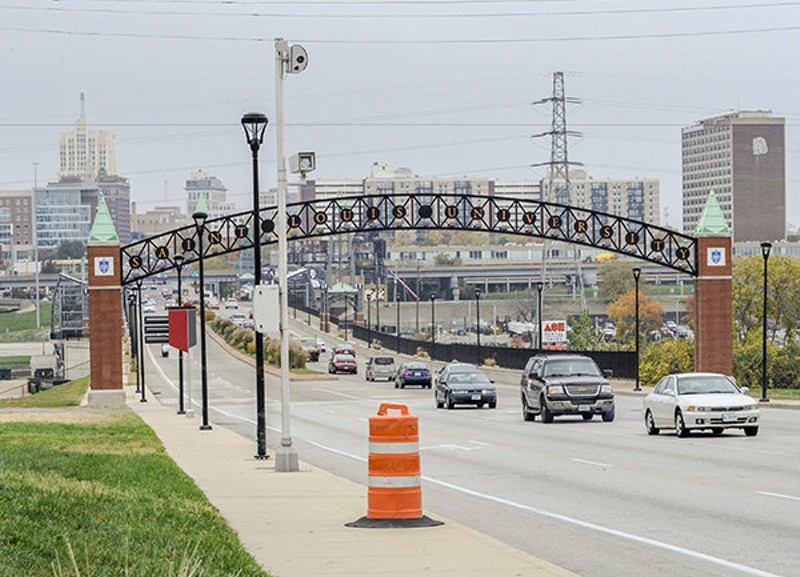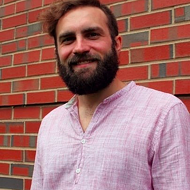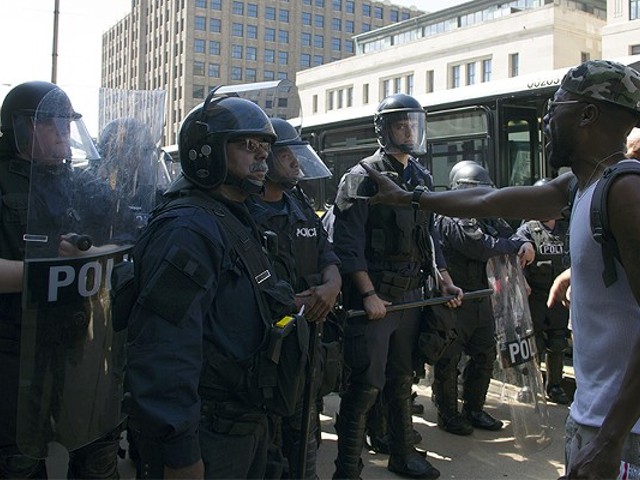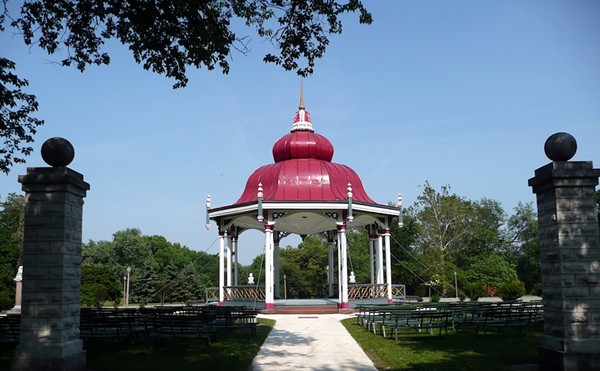
In November 2016, SLU released an extensive redevelopment plan aimed at better connecting the university to the medical facilities to the south, essentially creating one large contiguous SLU campus. The redevelopment plan, which was approved by the city's Board of Aldermen at the end of last year, includes a new outpatient medical facility and food hall as well as residential housing.
Glance at the artist's rendering released by SLU, and it's hard to imagine the discrete places to crash or the "getting-high spots" in the area along Grand remaining undeveloped. A more detailed perusal of SLU's plans shows that the place where Wille and I watched the open air deals is marked for transit-oriented development and to become part of the Choteau Greenway, which would connect the green spaces of Forest Park to the Arch grounds downtown. In September the Great Rivers Greenway announced a competition soliciting designs for the project, and around that same time another fence was erected separating the vacant lots east of Grand from the fast food restaurants along Chouteau. A hole big enough for a person to squeeze through was soon cut into its chain links.
That first summer day I talked to Wille a section of wooded area at Grand and Chouteau that had been a sleeping area had just been partially cleared; trees lay in a large pile, their leaves still green. Later that week, the pile of timber was gone and the cleared area looked like it was larger. SLU, a spokeswoman confirmed, did the clearing with development in mind.
"I sat and watched as they bulldozed all that," Wille said. "There were so many needles and lighters, crack pipes and shit. It wasn't safe. Someone might have stepped on something. I had some clothes back there that they bulldozed."
A group of people hung out in the shade of one of the brick pillars supporting the large Saint Louis University sign that arches over Grand just north of Chouteau. A few of them were the same folks previously darting onto side roads to do quick buys. They responded to the tree-clearing across the street with a collective shrug.
"That's SLU property," said the only member of the group who looked older than twenty-something. "I guess they're going to build something."
Later, when I asked Wille what he thought about SLU connecting its hospital and its university, he said it sounded like a good idea.
There is a template for a story about development in cities displacing the people already occupying the spaces to be developed. In the 1930s and '40s, for instance, the construction of the Gateway Arch pushed blocks and blocks of people out of their homes. This template accurately describes an age-old displacement, but to apply it too rigidly here would risk doing a disservice to someone like Wille.
Wille, after all, never really wanted to be on Grand in the first place.







